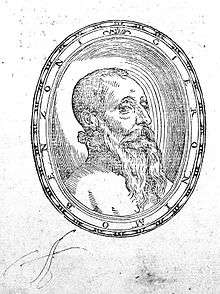Girolamo Benzoni

Girolamo Benzoni (born at Milan about 1519) was an Italian conquistador and merchant who wrote a popular account of his travels.
Life
In 1541, at the age of twenty-two, Girolamo Benzoni travelled from his hometown of Milan (Italy) to Sanlúcar de Barrameda, Spain, and then on to the New World. He claims to have been seeking adventure and fortune. He spent fifteen years in the territories conquered and being exploited by the Spaniards, travelling widely through the West Indies, Central America and South America, and visiting: the Caribbean (Greater and Lesser Antilles), Guatemala, Nicaragua, Mexico, Panama, Peru, and Venezuela. After losing much of the 'few thousand ducats' he had accumulated in a shipwreck on his way home, he finally arrived back in the port town of Sanlúcar de Barrameda (Spain) on 13 September 1556, with nothing more than his wealth of experiences. Subsequently he returned to Italy. In the dedication of his first edition he claims to have been born of humble parentage and unable to go to college. He also says his father sent him throughout Europe, one assumes on business. He then writes a new dedication in the second Italian edition in 1572. After that nothing is known of Benzoni.
Exactly what he was doing in the New World is not clear: he attached himself to various military expeditions though he was not by nature a fighting man; he reveals a good knowledge of political intrigue but does not apparently become involved in politics; he is informed about economics but does not discuss the commodities he traded in.
Works

Benzoni, while not unsuccessful in what he undertook, conceived an inveterate hatred of the Spanish people and Government and in return for the protection given him and for favors which he was compelled reluctantly to acknowledge, wrote and published a book of diatribes and accusations against Spain in America. It contains interesting details about the countries he visited, but abounds in errors and often in intentional misstatements. What Benzoni states about the Antilles is a clumsy rehash of Las Casas. His reports on the conquest of Mexico and conquest of Peru bristle with errors.
The book of Benzoni Historia del Mondo Nuovo was published at Venice in 1565. He dedicated it to Pope Pius IV. It was at the time when the controversy concerning the treatment of the Native Americans was hottest, and a work, written by one who had just returned from the New World after a stay of fifteen years could not fail to attract attention. In writing it, no standard of criticism was applied; this was not in the spirit of the times.
The ultra-philanthropists found Benzoni a welcome auxiliary, and foreign nations, all more or less leagued against Spain for the sake of supplanting its mastery of the Indies, adopted his extreme statements and sweeping accusations. Several editions were published in rapid succession; translations were made into English as well as into several other languages.
Intrinsically, the book has small merit, except in as far as it presents and describes facts witnessed by the author. Even these are not always faithfully reported. It might be called a controversial document because of its violent partiality and hostility. It does not notice mitigating circumstances, and ignores what is good when it does not suit the author.
Benzoni writes sometimes like a disappointed trader, and always as a man of limited education and very narrow views. The Historia was reprinted in 1572, and translated into French by Eustace Vignon and into German by Nicolaus Höniger, both 1579. Aside from the annotations which are often trivial and as partial as the book itself, the English translation, History of the New World by Girolamo Benzoni (London, 1857), by the Hakluyt Society, is certainly the best.
External links
 Media related to Girolamo Benzoni at Wikimedia Commons
Media related to Girolamo Benzoni at Wikimedia Commons- Catholic Encyclopedia article
![]() This article incorporates text from a publication now in the public domain: Herbermann, Charles, ed. (1913). "article name needed". Catholic Encyclopedia. New York: Robert Appleton.
This article incorporates text from a publication now in the public domain: Herbermann, Charles, ed. (1913). "article name needed". Catholic Encyclopedia. New York: Robert Appleton.